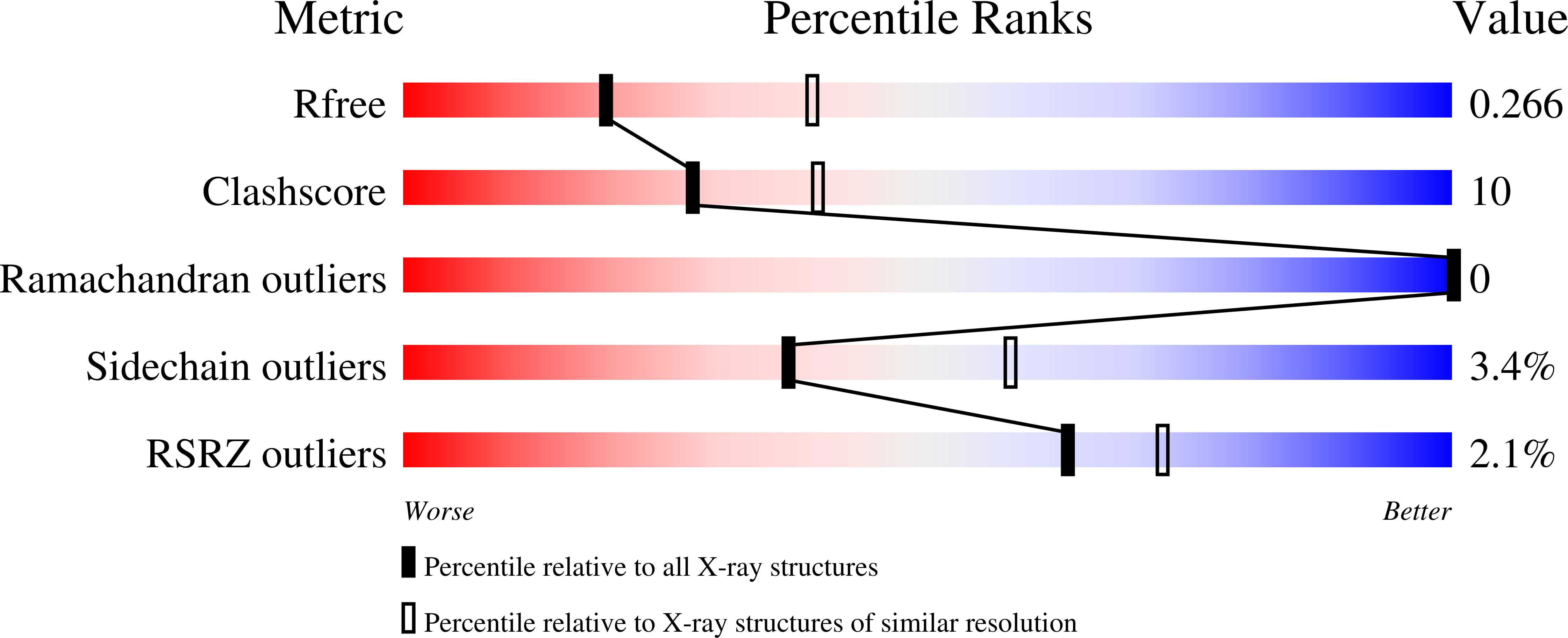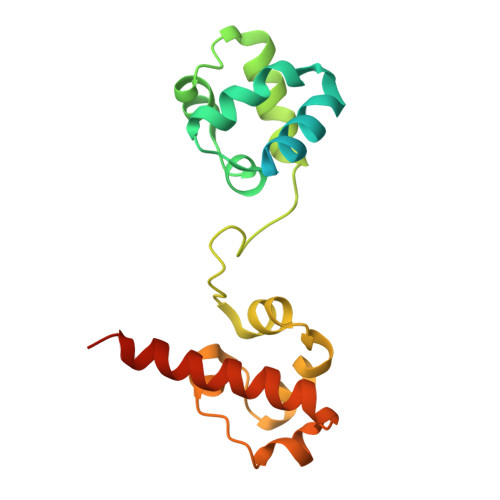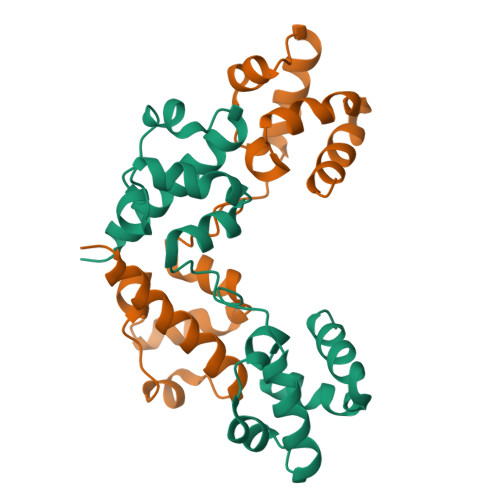A new mode of SAM domain mediated oligomerization observed in the CASKIN2 neuronal scaffolding protein.
Smirnova, E., Kwan, J.J., Siu, R., Gao, X., Zoidl, G., Demeler, B., Saridakis, V., Donaldson, L.W.(2016) Cell Commun Signal 14: 17-17
- PubMed: 27549312
- DOI: https://doi.org/10.1186/s12964-016-0140-3
- Primary Citation of Related Structures:
5L1M - PubMed Abstract:
CASKIN2 is a homolog of CASKIN1, a scaffolding protein that participates in a signaling network with CASK (calcium/calmodulin-dependent serine kinase). Despite a high level of homology between CASKIN2 and CASKIN1, CASKIN2 cannot bind CASK due to the absence of a CASK Interaction Domain and consequently, may have evolved undiscovered structural and functional distinctions. We demonstrate that the crystal structure of the Sterile Alpha Motif (SAM) domain tandem (SAM1-SAM2) oligomer from CASKIN2 is different than CASKIN1, with the minimal repeating unit being a dimer, rather than a monomer. Analytical ultracentrifugation sedimentation velocity methods revealed differences in monomer/dimer equilibria across a range of concentrations and ionic strengths for the wild type CASKIN2 SAM tandem and a structure-directed double mutant that could not oligomerize. Further distinguishing CASKIN2 from CASKIN1, EGFP-tagged SAM tandem proteins expressed in Neuro2a cells produced punctae that were distinct both in shape and size. This study illustrates a new way in which neuronal SAM domains can assemble into large macromolecular assemblies that might concentrate and amplify synaptic responses.
Organizational Affiliation:
Department of Biology, York University, 4700 Keele Street, Toronto, ON, M3J 1P3, Canada.


















